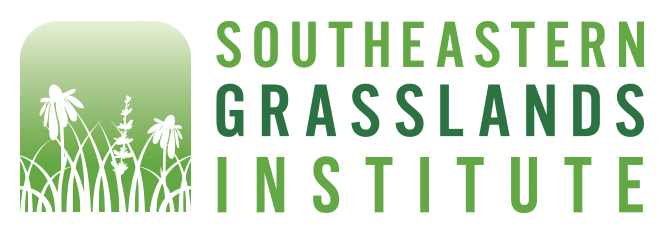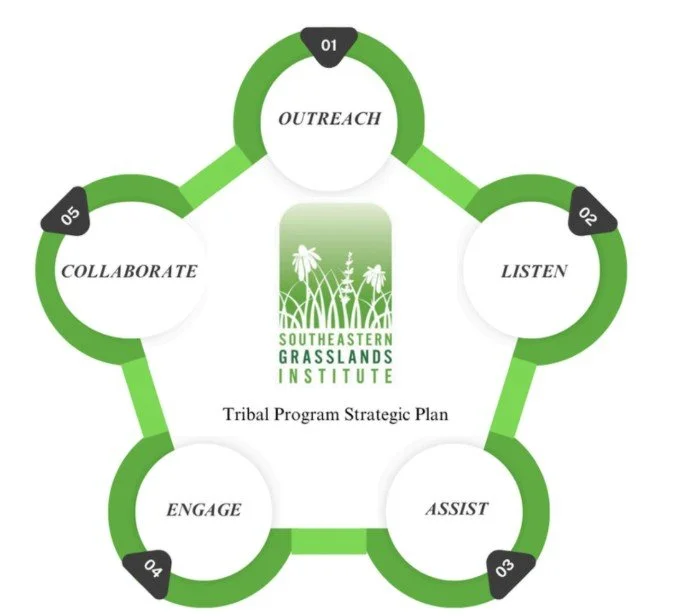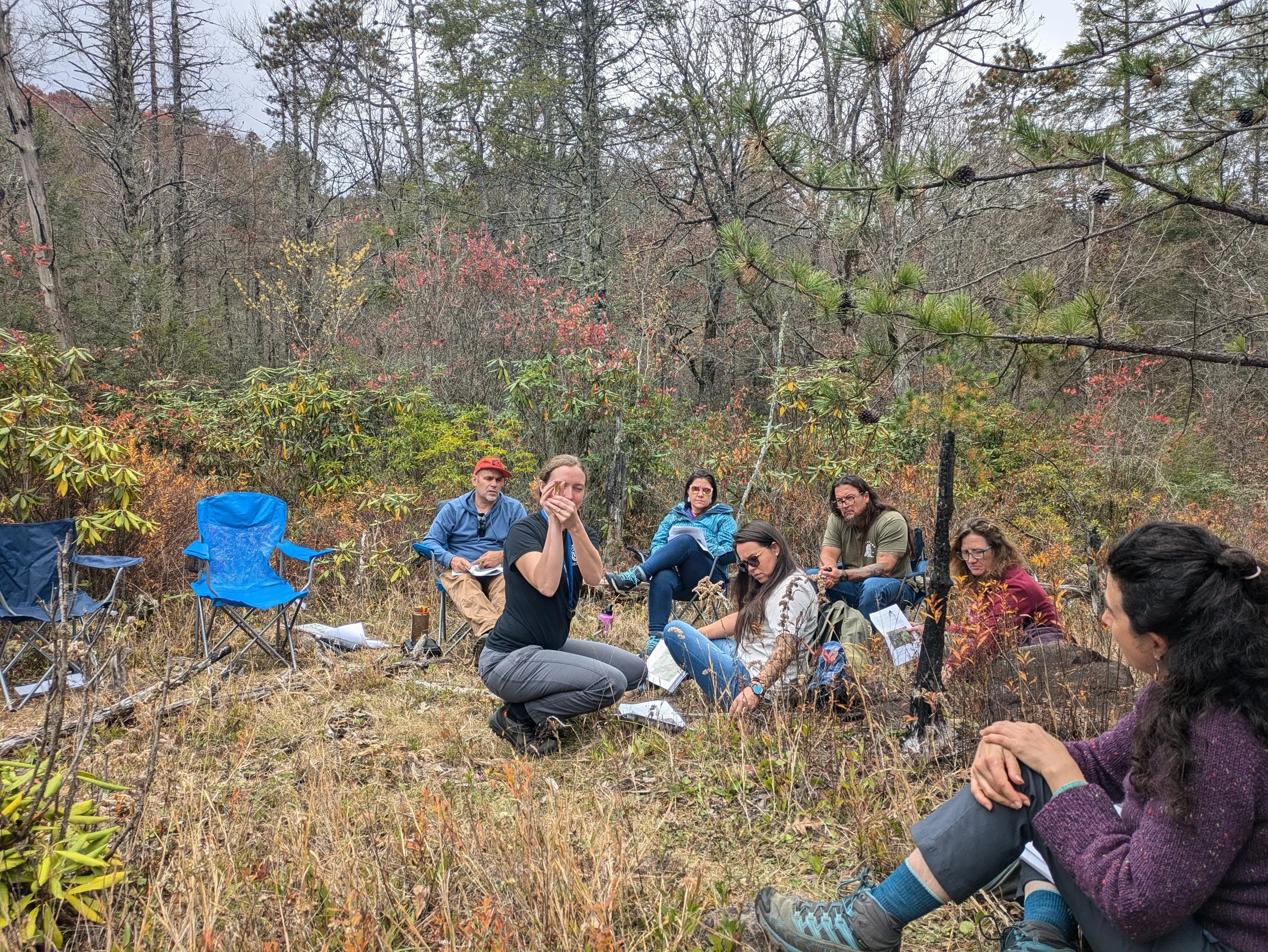Tribal Program
Tribal Program Staff group photo. From left to right: Katie Smith-Easter, Corlee Thomas-Hill, Gabrielle Patterson
-
Corlee Thomas-Hill (Eastern Band of Cherokee Indians), Gabrielle Patterson, EdD (Choctaw-Apache Tribe of Ebarb), and Katie Smith-Easter, MPH (Cherokee Nation), are the Southeastern Grasslands Initiative’s three Tribal Liaisons. Corlee’s education has centered on history, and her past work has involved using GIS to map wildland fires, and coordinating the Remember the Removal bike ride for the Eastern Band of Cherokee. Corlee works closely with the SGI restoration program as a resource for tribes and tribal members to incorporate grassland restoration on their land. Gabrielle’s Ed.D. and expertise is adult education focused on early Native American history. Gabrielle’s main work involves incorporating historical narrative and evidence into the SGI Grasslandia project. Katie holds an MPH and is working towards a MS in GIS. Katie works on environmental and cultural issues affecting water quality on tribal communities, and her work with SGI focuses on the native seed program and seed banking.
-
Grassland loss is the greatest issue facing eastern North American biodiversity. A majority of our southern grasslands have disappeared just in the past 25 years. Grasslands in the south include open treeless prairies, rocky barrens and glades, pine and oak savannas, coastal prairies, wet grasslands (e.g. bogs and fens), and high-elevation mountain top meadows called balds. Without colonization and forced removal of the Southeastern Woodland Tribes, grasslands would still be maintained by Indigenous communities through cultural burning, the care of large mammals such as bison and elk, and natural fire. Grasslands are home to numerous culturally significant plants and trees such as white oak, switchgrass, hickory, rattlesnake master, rivercane, and many more.
-
The Southeastern Grasslands Institute Tribal Program is committed to building collaborative relationships with Native American tribes across the southeastern United States. Through open communication, SGI seeks to empower tribally led conservation and restoration projects by integrating Indigenous land management into its efforts, recognizing that the original caretakers of the land are best equipped to steward it. The tribal program is grounded in a non-competitive, collaborative approach that values the wisdom and priorities of Indigenous communities as fundamental to the success of grassland conservation.
SGI Focus region
Yellowish-brown areas represent lands that historically supported large areas of grasslands and as associated, grassy woodlands.
Tribal program Values
The SGI tribal program values complementing not competing and collaboration without expectation
what we do
The SGI tribal program collaborates with tribes to uplift grassland conservation across the southeast, including but not limited to facilitating technical assistance from the SGI science team, working to incorporate Traditional Ecological Knowledge into all grassland restoration projects and educate SGI staff on current tribal priorities. The tribal program aids in finding financial support for grassland restoration projects. SGI’s tribal program provides co-stewardship opportunities between tribal members and SGI project areas, as well as provides educational resources, trainings, workshops, and other opportunities for tribal member.
Tribal program conservation strategies
Partnership
SGI’s Tribal Program Conservation Strategies focus on outreach, listening, assisting, engaging, and collaboration with tribes and aligned partners.
Major projects
current projects - tribal Program
Grasslandia - the SGI platform Grasslandia (coming soon!) will be a large online ArcGIS storymap of southeastern grasslands, and works closely with Gabrielle to incorporate historical documents, Native perspectives, and first hand context in the map.
Native Seed Program - the SGI Native Seed Program works with Katie on native seed saving, network building, and restoration efforts with tribal partners.
Grassland Restoration - the SGI Restoration Program works to conserve and restore the grasslands of the southeast, and works closely with Corlee to incorporate the goals of and support tribal community and individual tribal landowners with grassland restoration projects.
“quote on what the conservationists need to know about the importance of Tribal involvement/input in conservation”
Ways to support
Investing in partnerships
The SGI tribal program seeks to partner with private foundations, federal agencies, individual tribal land owners, and environmental NGOs whose missions align with SGI. If you fall into one of these categories, please contact us. Partnerships that build capacity for tribally led initiatives and that elevate tribal priorities for grassland restoration are our priority as we build our capacity.
Contact us today
Please reach out via email with general questions to sgi-tribal-group@segrasslands.org. For questions regarding land restoration, please contact Corlee at corlee.thomashill@segrasslands.org; for questions regarding native seeds and seed saving, please contact Katie at katie.smitheaster@segrasslands.org; for questions regarding history and research, please contact Gabrielle at gabrielle.patterson@segrasslands.org.
To stay in the loop about the SGI Tribal Program, please subscribe to our monthly newsletter by clicking here. To stay in the loop about the SGI Tribal Program, please subscribe to our monthly newsletter by clicking here, and follow SGI on social media.
Donate
Every donation counts in supporting our work to preserve the biodiversity of southeastern grasslands with hands-on, sustainable, and regenerative restoration work. Your interest in supporting our Tribal Program and commitment to supporting Indigenous-Led conservation work is deeply appreciated. The following link will take you to a link to donate to SGI, and we are very grateful for your support of our work.

























